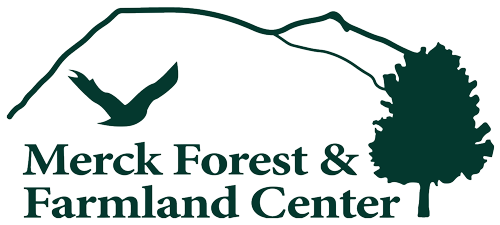
If you are looking for the Merck piglets after this week, you won’t have much luck looking in the Small Animal Barn, their home since they were born two months ago. Instead, take a peek down Discovery Trail. You’ll catch them rummaging around, rooting up insects and plants, and munching on all sorts of piggy goodies in the brush, all the while helping us keep that area clean and manageable. Their mom, Peggy Sue, will rejoin our gilt Cybil a bit further down the trail, where they too will share a patch of forest.
When they are old enough (roughly around two months) and the weather permits, our pigs our weaned and move out on pasture or in the woods, a management technique that benefits both us and them. Their bull-dozing noses help dig up large stones, roots, and logs, which we can then remove after the space is no longer occupied. In return, they get a balanced wild diet to supplement their feed regimen, keeping them healthy and happy, and later, deliciously flavoring the pork they produce. This year, in addition to the usual menu items, the pigs will enjoy a bumper crop of one of their most beloved treats: acorns.
Every few years, different tree species have what is known as a “mast” year. Masting is defined by uncharacteristically high fruit production of a particular species in an area, and the time between mastings is determined by the type of tree along with other environmental factors such as weather. Many different hypotheses have been posed as to why the masting cycle exists in nature, from predator satiation to coincidental carbohydrate stockpiling of trees after their summer-sun gluttony. Regardless of the cause, the results are unmistakable: more consumption by predators and higher populations of the beneficiaries of these fruits. This year, we are seeing oaks produce high quantities of mast and leaving their acorns all over the place. While Peggy Sue, Cybil, and the piglets will certainly be eating their fair share of acorns.

Some interesting information on mast seeding can be found on the U.S. Forest Service’s website at http://www.fs.fed.us/ and the Mast Tree Network released an article on the process, tradition, and benefits of feeding pigs acorns and other mast crops. The article can be found here: http://www.mast-producing-trees.org/2009/11/acorn-finished-pork-an-ancient-tradition/ .

